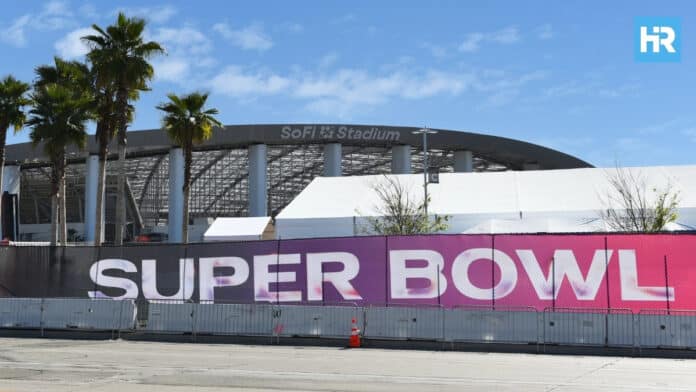Every year in February, the Super Bowl brings people together across the country. It doesn’t matter if you’re a football fan or not, the Super Bowl has become a yearly national tradition that includes food, entertainment, commercials, and community. At this point, it’s practically part of American culture.
Super Bowl LIX was held on February 9, 2025, in New Orleans, and it followed this pattern exactly. The game featured a rematch between the Kansas City Chiefs and the Philadelphia Eagles, the same two teams that played in 2023. Once again, fans gathered in homes, restaurants, and public venues to take part in what has become a national celebration.
But how did we get here? To understand the importance of Super Bowl traditions, let’s look at how the event started and how it changed over time.
- The Super Bowl is the most-watched event in the U.S., with Super Bowl LIX in 2025 continuing its dominance as a major cultural and entertainment spectacle.
- Halftime shows and ads are now as important as the game, with Kendrick Lamar headlining and brands paying $8 million for 30-second spots.
- Americans ate over 1.4 billion chicken wings during Super Bowl LIX, making food a core part of the tradition, alongside strict safety reminders from health experts.
The Beginning of the Super Bowl
The Super Bowl started because of a merger between two football leagues: the NFL (National Football League) and the AFL (American Football League). In 1966, the two rival leagues agreed that their champions would face each other in a final game. This agreement created the first championship match, which was played on January 15, 1967, between the Green Bay Packers and the Kansas City Chiefs. The Packers won the game 35–10.
At first, the game was not called the Super Bowl. It was simply known as the AFL-NFL World Championship Game. But Lamar Hunt, founder of the AFL, suggested the name “Super Bowl” after seeing his children play with a toy called the “Super Ball.” The media started using the term, and it quickly became permanent.
In the early years, attendance was low, and television ratings weren’t strong. The stadium for the first game was not full, and many fans were not used to traveling to neutral cities. However, this changed over time. In 1978, the NFL decided to air the game during prime time, after 6 PM. This led to a large jump in viewership. By 2023, the Super Bowl had become the most-watched TV broadcast in U.S. history, with 115.1 million people tuning in.
The game’s timing also helped its popularity. The first Super Bowl happened during the Vietnam War, when the country was divided and facing morale issues. Football gave Americans something to rally around. Historians point out that this helped the Super Bowl become much more than a game. It became a shared experience during difficult times.
How Halftime Shows Became the Main Event for Many
In the first Super Bowl, the halftime show featured marching bands from the University of Arizona and Grambling State University, including pigeons and balloons. There were no celebrities or pop stars. It was simply a break from the game, not a show in itself.
That changed in 1993, when Michael Jackson performed at Super Bowl XXVII. His performance attracted more viewers than the game itself. After that, halftime shows became a major part of the event. They now include elaborate stage designs, global artists, and millions of viewers.
In 2023, Rihanna’s halftime show reached 118.7 million viewers, setting a new record. For Super Bowl LIX in 2025, Kendrick Lamar was the headliner. He became only the second hip-hop artist to perform solo during halftime. His show was praised not only for its performance quality but also for representing hip-hop’s growing place in American mainstream culture.
This is important because, for many years, halftime shows only featured pop or rock artists. Including hip-hop artists like Kendrick Lamar shows that the NFL is recognizing cultural shifts and opening its platform to different voices.
Super Bowl Food: Why We Eat So Much
Food is one of the most important Super Bowl traditions. It’s the second-biggest eating day in the United States after Thanksgiving. People plan menus, shop in advance, and prepare large amounts of snacks. One food stands out more than others: chicken wings.
During Super Bowl LIX, Americans ate about 1.4 billion chicken wings. The reason wings are so popular has to do with capsaicin, a compound in chili peppers. Sean O’Keefe, a food scientist, explains that capsaicin creates a burning feeling that makes spicy foods exciting to eat.
Popular dishes also included Buffalo Chicken Sloppy Joes, Buffalo Cauliflower Sandwiches, and Buffalo Chicken Dip. These foods are easy to make, full of flavor, and easy to share with a group.
At the same time, experts remind people to focus on food safety. Melissa Wright, a food safety specialist, recommends washing hands for at least 20 seconds before preparing food, keeping raw and cooked food separate, and making sure chicken is cooked to at least 165°F. Food should not sit out for more than two hours, and leftovers should be eaten within four days.
With concerns about avian flu still present during the 2025 game, proper handling of poultry was especially important.
Why Super Bowl Commercials Matter So Much
Another tradition is watching commercials, since most of the time, people skip ads, but not during the Super Bowl. Advertisers pay huge sums of money because they know millions of people will be watching.
In 1984, Apple aired a now-famous ad for the Macintosh computer. It was directed by Ridley Scott and looked more like a short film than a typical commercial –– an ad changed how companies approached Super Bowl marketing.
In 2025, the cost of a 30-second commercial reached a new high of $8 million. Companies saw it as worth the cost because no other event can guarantee such a large, engaged audience.
This year, Doritos brought back its “Crash the Super Bowl” contest, inviting fans to submit their own ads. More than 2,000 entries were submitted. According to Dan Cohen from PepsiCo Foods North America, this kind of campaign builds brand loyalty by letting fans feel like part of the experience.
Taco Bell took a similar approach. Instead of hiring celebrities, they featured real customers in their ads using “Live Más Drive-Thru Cams.” Ronald Quintero, a company spokesperson, called the ad a “love letter” to Taco Bell’s customers.
Jennifer Freeman, an advertising expert at Temple University, says this shows a shift in strategy. Audiences today want real stories and real people. Super Bowl ads have become part of the entertainment, not just a break in the action.
Why the Super Bowl Keeps Bringing People Together
Some major cultural events, like the Oscars or the Olympics, have lost viewers. But the Super Bowl has only grown. One reason, according to Bryant Simon, a history professor at Temple University, is that football works well on TV — it’s one game, easy to follow, and comes with all the drama, tension, and high stakes you could wish for.
Another reason is the variety. Even people who don’t care about football can still enjoy the commercials, the food, or the halftime show. In 2025, pop star Taylor Swift attended the game in support of her boyfriend, Travis Kelce of the Chiefs. She had performed in Japan the night before but made it to Las Vegas in time. Her presence attracted more viewers and media attention.
Jennifer Freeman calls the Super Bowl a “cultural campfire” — a moment when people gather, share an experience, and feel part of something bigger. Even if people don’t watch football all year, they tune in for this event.






